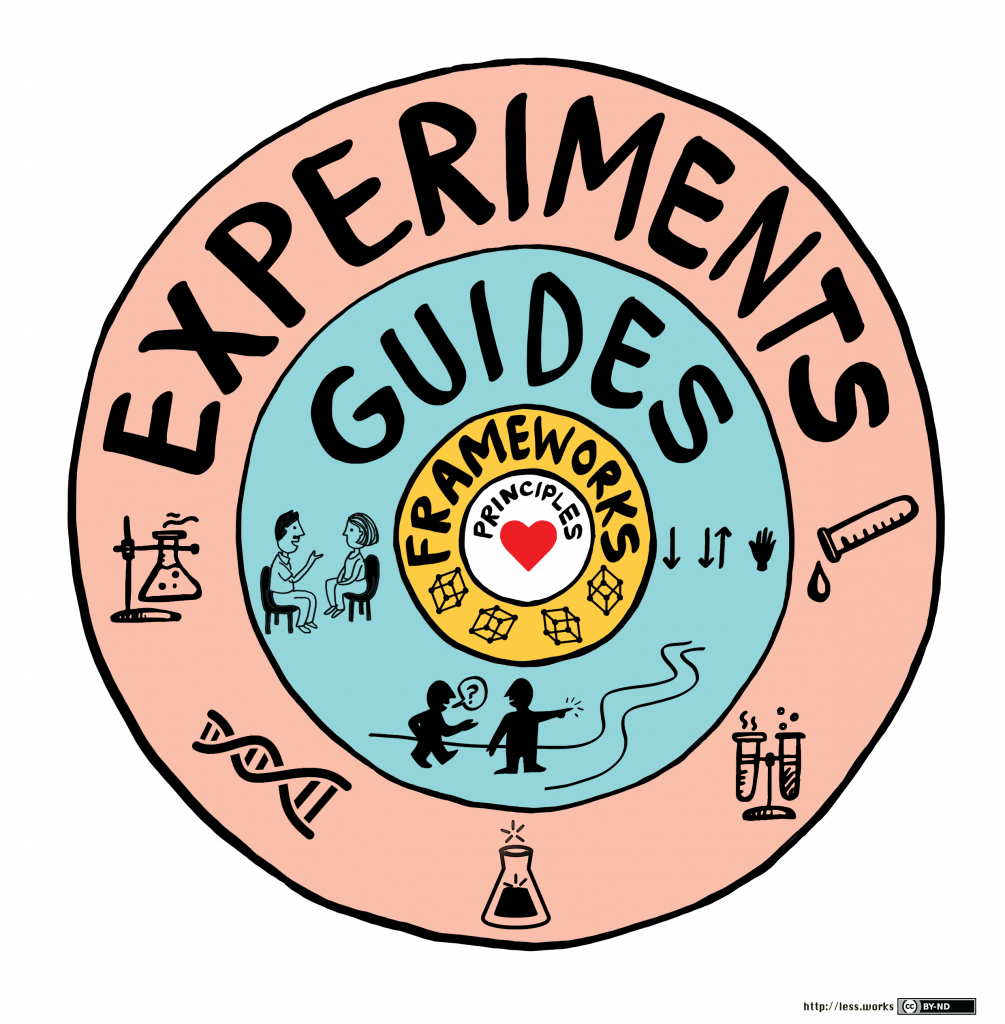LeSS is a very simple framework for scaling agile teams. But it’s more than a framework. It’s a body of knowledge to descale your organisation.
There is value in frameworks. They describe roles, meetings and artefacts, so the adoption of the framework means simply to follow the framework’s rules. That means a framework is like a recipe for more complex change. Humans like to cope with complexity by simplifications.
Additionally the framework is also a brand. It’s a name to communicate an idea. Certification schemes related to such a framework help to define and build the brand. Brands are also simplifications. They promise usually intangible values to a market. Intangible values are not easy to communicate. So it makes sense to define a framework.
Level of Descriptiveness
Simplification is only one strategy to cope with complexity and maybe not the best one. Adopting scaling approaches in an organisation are highly contextual. Businesses are different, organisational structures and cultures are different, products and services are different. The more descriptive a framework is the more likely it will be, that it will not fit to the organisation and not fulfil the brand’s promises.
The level of descriptiveness matters. Scrum is a good example. It’s very simple and leaves a lot of room to add specific practices to make it work in the organisational context. On the other hand, it also comes with just enough framework rules – described in the Scrum Guide. So it provides also guidance to the people, who want to adopt it. Craig Larman has explained this in the following video, which Valtech has done a couple of years ago in the first official LeSS training in Germany:
LeSS Framework – From Principles to Practices
LeSS – Large Scale Scrum – is designed with the same intention. To provide a minimal set of rules to have enough guidance, but also leave enough freedom to adopt it in the context. LeSS is based on principles and defines a minimum set of rules for the framework.
But the adoption in a certain context requires more, esp. more knowledge what practices can be added to the prescribed rules. Craig Larman and Bas Vodde have described in their books already a comprehensive list of experiments. These experiments are recommendations for practices to try or to avoid. Most of them are independant from the LeSS framework. Additionally to the experiments for the practices, LeSS comes also with guides. Guides are recommendations for the adoption of LeSS. Following picture from less.works describes complete picture of LeSS:

Hence LeSS is a framework, but it is much more: a body of knowledge for adopting it in the organisation. It is designed to bring value to multiple stages of learning, also known as Shu, Ha, Ri. This was introduced by Alistair Cockburn in 2001 in the agile community.